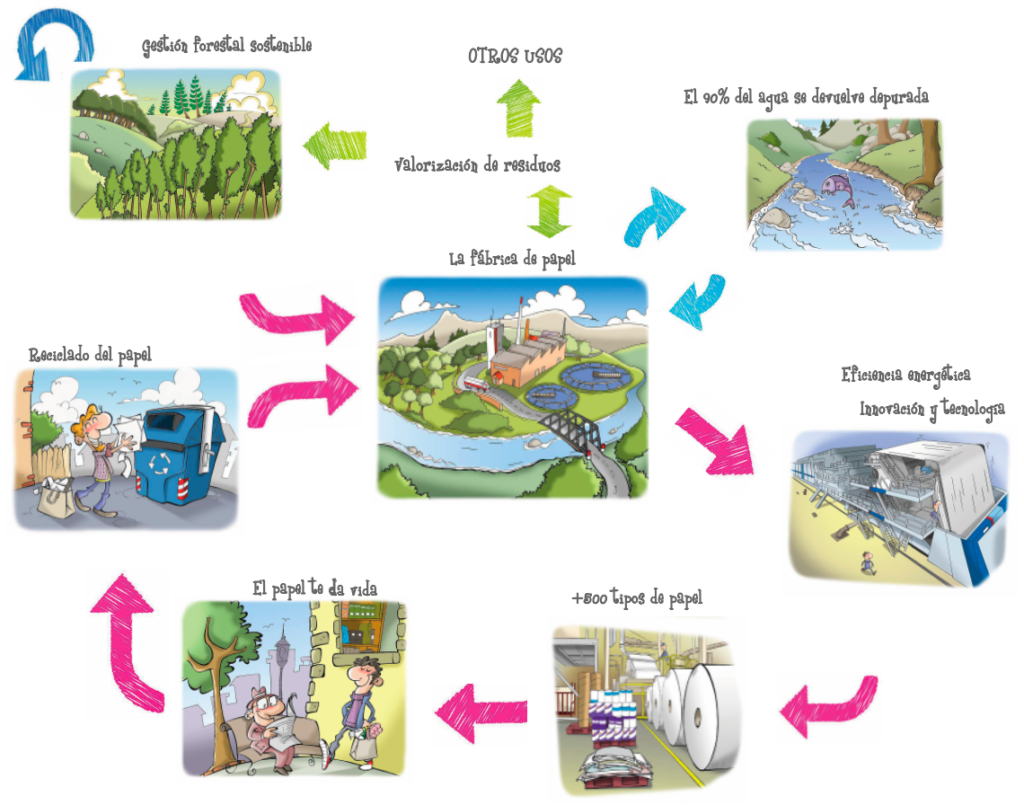
Raw fiber -> recovered paper
Cellulose fibre extracted from wood, which we call raw fibre, is the only fundamental raw material for paper production. However, as you already know, recycled fibre from the recovery of paper and cardboard from blue bins is also used to make paper. Nevertheless, to claim that paper can only be made from recovered paper is incorrect, and there are strong grounds to prove it:
The physical properties of cellulose fibres gradually decay with successive uses and it is estimated that it can be recycled and reused an average of six times.
Around 19% of the paper we use cannot be recovered for recycling, sometimes because we keep it, such as books, documents and photographs, and sometimes because it deteriorates or is destroyed due to its use, such as toilet and sanitary paper.
There are certain types of paper which, because of their intended use, need to offer properties that only raw fibre can provide.
Society recovers more than 70% of paper, and the paper and cardboard industry ensures its recycling by producing new products. Thanks to everyone’s commitment, we have gone from recovering 1.4 million tonnes in 1986 to 5 million tonnes today across the entire country, and we have also avoided filling up landfills.
And as you already know from what you have learned along with us, consuming recycled paper has nothing to do with saving trees. It’s about extending the life of cellulose fibres.
Paper can only have a guaranteed long life, as well as all the uses we put it to, if we also produce paper from raw fibre.